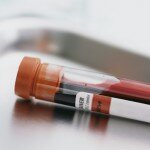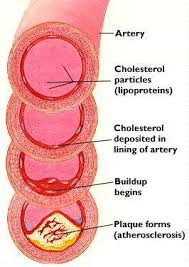Share
 Happily Married or Headed for Divorce?
Happily Married or Headed for Divorce?
Over the last decade cholesterol has become the enemy of the cardiovascular system. To combat this enemy more and more doctors are prescribing statin drugs like Lipitor (atorvastatin), Zocor (simvastatin), Mevacor (lovastatin) and Pravachol (pravastatin) as the answer to good cardiovascular health.
But is cholesterol the real enemy? And, if it is do the side effects of statin drugs outweigh the benefits? Or, could there be a better way to protect the endothelial cells of your cardiovascular system from oxidative stress?
Cholesterol – Friend or Foe!
I used an exclamation mark instead of a question mark because it can be both. Cholesterol is absolutely necessary for the proper function of your body. Every cell membrane in your body needs cholesterol to help it function properly. One of the many roles of your cell membrane is to keep the distinct biochemistry of the inside of your cell separate from that outside your cell. When your cholesterol levels are not adequate, the cell membrane becomes porous. This triggers an emergency response were the body releases corticoid hormones. These hormones will pull cholesterol from one part of the body to the site in need to help repair the cell membrane.
Your brain could not function properly without cholesterol since half the dry weight of the cerebral cortex is made up of cholesterol. Additionally, it is vital to the neurological functions of the brain such as memory and the ability of the brain to properly use hormones like serotonin. Serotonin is your body’s “feel-good chemical” and when cholesterol levels are too low then the serotonin receptors cannot work properly.
Cholesterol also plays a significant role in the following areas:
- It is the precursor to vitamin D which is absolutely necessary for many of your body’s biochemical processes including mineral absorption.
- It is necessary for the formation of bile salts which are required for the proper digestion of fats.
- It is a powerful antioxidant to help protect you against cancer and aging.
-
It is the precursor to all the hormones produced in the adrenal cortex. This alone has huge implications to your overall wellness since a disruption in the production of adrenal hormones can lead to:
- Blood sugar problems
- Edema
- Mineral deficiencies
- Chronic inflammation
- Difficulty in healing
- Allergies
- Asthma
- Reduced libido
- Infertility and other reproductive problems.
As you can see cholesterol is absolutely necessary for your total wellness.
So, what’s the danger from cholesterol?
Cholesterol is a natural product of the liver but sometimes the liver produces too much cholesterol. When this happens it can affect the endothelial cells of your cardiovascular system. It can damage the intercellular junctions between the endothelial cells allowing deposits to build up. This causes the smooth and flexible lining of your blood vessels to become rough and hard leading to the disease commonly called arteriosclerosis or atherosclerosis. As this process continues over time, the deposits or plaques become larger which narrows the interior of the blood vessel making it harder for blood to pass through. This increases resistance to blood flow which can cause your blood pressure to increase.
The narrowing of your blood vessels also causes blood turbulence that can lead to the formation of blood clots. These blood clots, if large enough or if they pass through too narrow of an opening, can eventually lodge themselves in a blood vessel causing a blockage. When this happens in the heart we call it a heart attack. When it happens in the brain it is called a stroke.
The Effects of Statin Drugs!
When your doctor takes a blood sample to check your cholesterol levels he or she is looking at three entities: total cholesterol, LDL cholesterol and HDL cholesterol. It is the LDL or low-density lipoprotein that is considered the “BAD” cholesterol because it can damage the endothelial cells resulting in plaque buildup. The HDL or high-density lipoprotein is considered the “GOOD” cholesterol because it seems to have a positive effect in protecting the endothelial cells from LDL damage.
Statin drugs lower cholesterol by blocking a key enzyme that the liver uses for its production. The enzyme is HMG-CoA (3-hydroxy-3-methyglutaryl COA) reductase. This inhibits the liver’s ability to produce LDL or low-density lipoprotein. This frees up the number of LDL receptor sites on the surface of liver cells allowing the liver to remove more cholesterol from the bloodstream. Thus, statin drugs work to inhibit the production of LDL and indirectly assist the liver cells in removing cholesterol from the blood.
Studies have shown statin drugs to have the following benefits:
- Lower LDL levels from 18 to 55%.
- Raise HDL levels 5 to 15%. (According to the Mayo Clinic for every 1 milligram per deciliter rise in HDL cholesterol you reduce your risk for heart attack by 3 percent.)
- Help the body reabsorb cholesterol that has accumulated on the artery walls.
- Reduce oxidative stress.
- Reduce inflammation.
- Stabilize plaque formations.
- Help with endothelial function.
This looks pretty encouraging. By using a drug that can lower the “BAD” cholesterol 18 to 55% while increasing the “GOOD” cholesterol 5 to 15% you can reduce the risk for heart attack, reduce oxidative stress, reduce inflammation, and aid endothelial function. Who wouldn’t want this?
Well, let’s look at the side effects of statin drugs.
Remember the enzyme HMG-CoA reductase that is inhibited by the statin drugs. This enzyme is also critical in the formation of two other life enhancing compounds: ubiquinone and dilochol. Ubiquinone is better known as Co-Enzyme Q 10 or CoQ10. It plays a critical role in helping the mitochondria of your cells produce ATP which is necessary for energy production. Your heart requires high levels of CoQ10 to function properly. Plus, it’s involved in respiration, helps to maintain membrane integrity critical to nerve conduction, and vital to elastin and collagen formation. The side effects of CoQ10 deficiency include muscle wasting which leads to muscle weakness and severe back pain, heart failure, neuropathy, and tendon and ligament inflammation.
Dolichols play a huge role in helping to make sure that the proteins manufactured by the cell’s DNA end up at their proper targets. This helps to ensure that the cells respond correctly to their genetic programming. When interfered with they can allow for some very unpredictable consequences at the cellular level.
Even though the FDA has deemed statin drugs to be safe, there is no drug that is totally without side effects. For statin drugs, especially now that people have been taking them longer than required in clinical testing, the side effects are more evident. They typically fall into two categories.
- Muscle Pain associated with Rhabdomyolysis. Muscle pain in the shoulders, jaw, legs and back are common. This pain is a symptom of the breakdown of muscle tissue caused by statin drugs. When muscle breaks down, the body must eliminate the excess waste. This can overload the kidneys leading to a more serious problem. Rhabdomyolysis is the medical term for this muscular breakdown and the subsequent release of the contents of muscle fiber into the bloodstream. When this occurs the person’s urine is usually dark, red, or cola colored. If severe enough it can lead to acute kidney failure and death.
- Muscle Weakness associated with Neuropathy. Neuropathy is a malfunction of the peripheral nervous system which can affect muscle tone and function. There are many types of neuropathy with one caused by statin drugs. Muscle weakness is frequently a symptom of this form of neuropathy. Other symptoms could include: numbness, tingling, burning sensations, and extreme sensitivity to touch. If left untreated, neuropathy can lead to muscle deterioration and possibly paralysis. This can directly effect swallowing and breathing.
Additionally, memory loss and cognitive function can also be a side effect of statin drugs. This would make sense since cholesterol is critical to proper brain function.
Finally, congestive heart failure has more than doubled from 1989 to 1997 (with statin drugs introduced into the market place in 1987.) During this time the incidence of heart attack has slightly declined. The current reasoning for this is the interference in the production of CoQ10 which is critical to proper heart function.
The drug industry downplays these negative side effects. While it is difficult to get an exact estimate of the true problem since there are competing interests, researchers estimate that 1 – 5% of statin users will experience muscle pain and 10% will experience muscle weakness. It is estimated that 16 million Americans take Lipitor, the most popular of the statin drugs. If the above estimates are correct, then 160,000 to 800,000 thousand American are experiencing some level of muscle pain and 1.6 million are experiencing muscle weakness.
Is There a Better Way!
Yes, there is but this blog post has already become to long. I’ll address this issue in my blog entitled “Nitric Oxide and Cholesterol!” But let me say this before I conclude. Like diabetes there are two issues that need to be addressed. One is the over production of cholesterol and the other is the damage it does to the endothelial cells. We’ll examine this in my next post.
If you would like additional information on the effects of statin drugs then I would highly recommend the following two sources:
Dangers of Statin Drugs: What You Haven’t Been Told About Popular Cholesterol-Lowering Medicines by Sally Fallon and Mary G. Enig, PhD
Statin Answers – a website designed to educate and answers your questions about statin drugs.
Together we can work to save a million lives!
Dan Hammer
The information contained in this blog is for general information purposes only and never as a substitute for professional medical advice or medical exam. The information contain in this blogging website has not been evaluated by the Food and Drug Administration and should not be used to diagnose, treat, cure or prevent any disease without the supervision of a qualified medical doctor.


 Happily Married or Headed for Divorce?
Happily Married or Headed for Divorce?